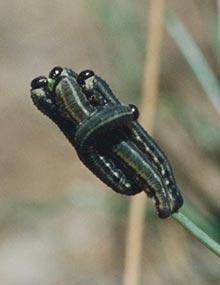

Caterpillars in Your Yard and Garden, Page 16
Reviewed
European pine sawfly caterpillars (Neodiprion sertifer) are present in spring and summer. They produce one generation per year.
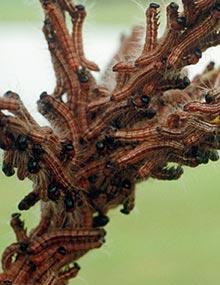
Caterpillars in Your Yard and Garden, Page 51
Reviewed
Red phase and black phase walnut caterpillars (Datana integerrima) are present from early May to September. They produce one to two generations per year.
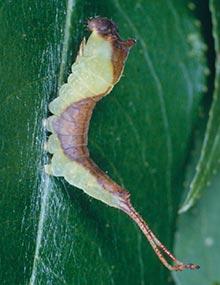
Caterpillars in Your Yard and Garden, Page 19
Reviewed
Gray furcula caterpillars (Furcula cinerea) are present from spring to fall. They produce two generations per year.
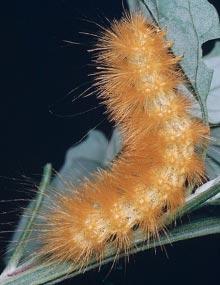
Caterpillars in Your Yard and Garden, Page 54
Reviewed
Yellow woollybear caterpillars (Spilosoma virginica) are present from spring to fall. They produce two to three generations per year.
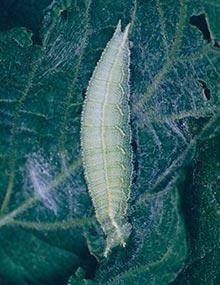
Caterpillars in Your Yard and Garden, Page 22
Reviewed
Hackberry emperor caterpillars (Asterocampa celtis) are present from early summer to fall. They produce two generations per year.
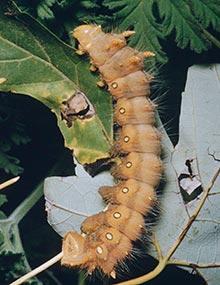
Caterpillars in Your Yard and Garden, Page 25
Reviewed
Imperial moth caterpillars (Eacles imperialis) are present from June to August. They produce two generations per year. Common host plants include oaks, sweetgum, maple, hickory, sassafras, elm and sycamore.
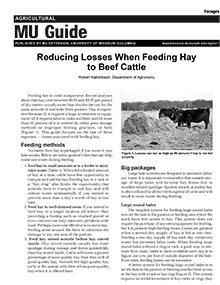
Reducing Losses When Feeding Hay to Beef Cattle
Reviewed
Feeding hay to cattle is expensive, mostly due to waste. Learn good management practices to minimize the losses that occur due to poor storage methods, improper feeding methods, or both.
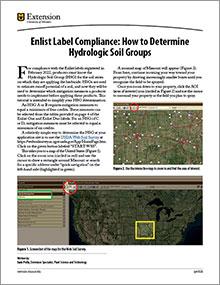
Enlist Label Compliance: How to Determine Hydrologic Soil Groups
New
Learn how to use the USDA Web Soil Survey interactive map to determine your field's hydrologic soil group for the soil series on which you plan to apply an Enlist herbicide.
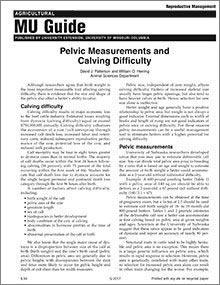
Pelvic Measurements and Calving Difficulty
Reviewed
Learn how pelvic measurements can help estimate calf birth weight and reduce calving difficulty in beef cattle.
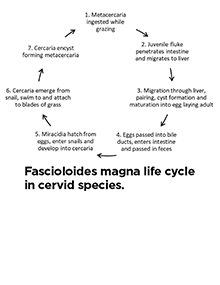
Liver Flukes in Missouri: Distribution, Impact on Cattle, Control and Treatment
Reviewed
Cattle operations should evaluate their risk for is Fascioloides magna, also known as the deer fluke or the giant liver fluke. Learn about its distribution in Missouri, its life cycle, treatment and more in this guide.
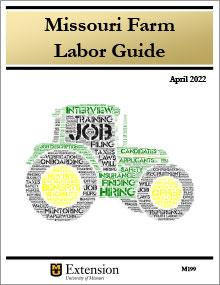
Missouri Farm Labor Guide
Revised
Learn good human resource practices related to employee recruitment, hiring, onboarding, training and termination that your farm or agribusiness can use.
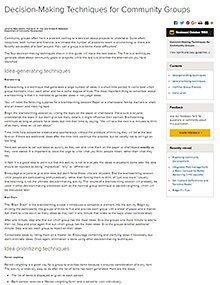
Decision-Making Techniques for Community Groups
Reviewed
Explore four decision-making techniques to help community groups identify and prioritize projects effectively.
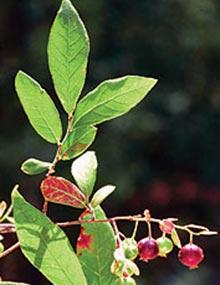
Quail-Friendly Plants of the Midwest, Page 25
Reviewed
Huckleberries are stiffly branched leafy shrubs or small trees, often found in extensive colonies, from 6 inches to 10 feet tall. The alternate, simple leaves are 3/4 to 3 inches long and 1/2 to 1 inch wide. The fruits are blue to black berries with a faint whitish coating.
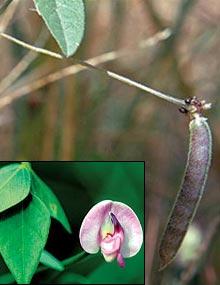
Quail-Friendly Plants of the Midwest, Page 57
Reviewed
Three species of wild bean occur in the Midwest. Each is a somewhat small plant with twining vines and relatively small leaves composed of three leaflets. Seeds are present in hairy pods.
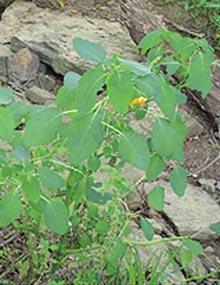
Quail-Friendly Plants of the Midwest, Page 28
Reviewed
Jewelweed commonly reaches 18-24 inches. Leaves have scalloped edges and fleshy stems that exude a clear, watery gel-like liquid when crushed. Flowers are orange (I. capensis) or pale yellow (I. pallida).
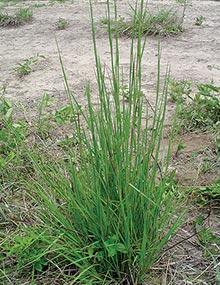
Quail-Friendly Plants of the Midwest, Page 31
Reviewed
Little bluestem is a native grass that occurs in clumps with fine leaves less than 1/4 inch wide. Seed stalks are commonly 2 to 3 feet tall. Stems are hairy and flattened near the base. Seeds are light and fluffy.

Quail-Friendly Plants of the Midwest, Page 34
Reviewed
Orchard grass is a cool-season bunch grass. Its leaves have a bluish cast. Close inspection of the leaf collar reveals a flattened shape and membranous ligule. Its rather distinctive seed heads form by late May. Height at maturity averages 3 feet.
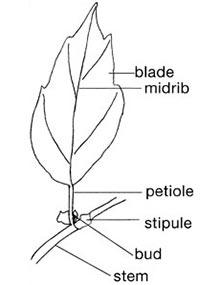
Quail-Friendly Plants of the Midwest, Page 02
Reviewed
Refer to this glossary for definitions of words and phrases related to plants.
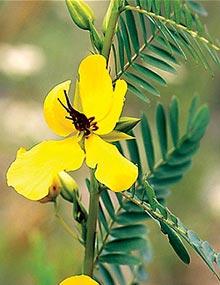
Quail-Friendly Plants of the Midwest, Page 37
Reviewed
Partridge pea grows from 12 to 18 inches up to 3 feet tall. It has compound, alternate leaves. Leaflets are less than 1 inch long. Flowers are bright yellow with reddish-purple bases, about 1 inch across. Ripened seedpods are red-brown.
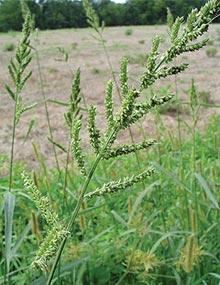
Quail-Friendly Plants of the Midwest, Page 05
Reviewed
Barnyardgrass is most often found growing in moist areas. The large seeds of this grass make it an important food source for bobwhites.
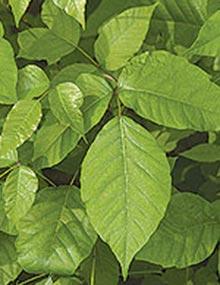
Quail-Friendly Plants of the Midwest, Page 40
Reviewed
Poison ivy is a vine that can grow up to 60 feet high or a low, upright shrub. It has alternate leaves with three oval to lance-shaped leaflets with a pointed tip.The flowers are greenish white and grow in clusters 1 to 4 inches long on new growth of stems.
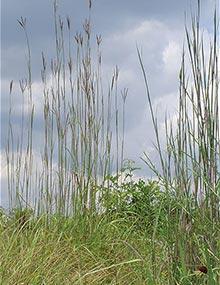
Quail-Friendly Plants of the Midwest, Page 08
Reviewed
Mature seed stalks of big bluestem are copper colored and often grow more than 5 feet tall. The clumpy growth of big bluestem allows room for other plants to exist and provides excellent habitat structure for nesting and roosting

Clear Writing
Reviewed
Get your point across clearly in writing with these 10 principles of clear writing. Also, learn how to test the clearness of your writing and keep it simple.

Quail-Friendly Plants of the Midwest, Page 43
Reviewed
Common ragweed commonly grows to 18 inches. Leaves are simple, alternate, smooth and deeply lobed. Often the lobes are lobed again.
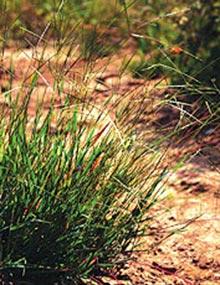
Quail-Friendly Plants of the Midwest, Page 11
Reviewed
Often found in disturbed areas, crab grass tends to indicate early successional vegetation, and thus good quail habitat. However, late spring disturbance may result in a crab grass response heavy enough to displace other beneficial or desired plants.